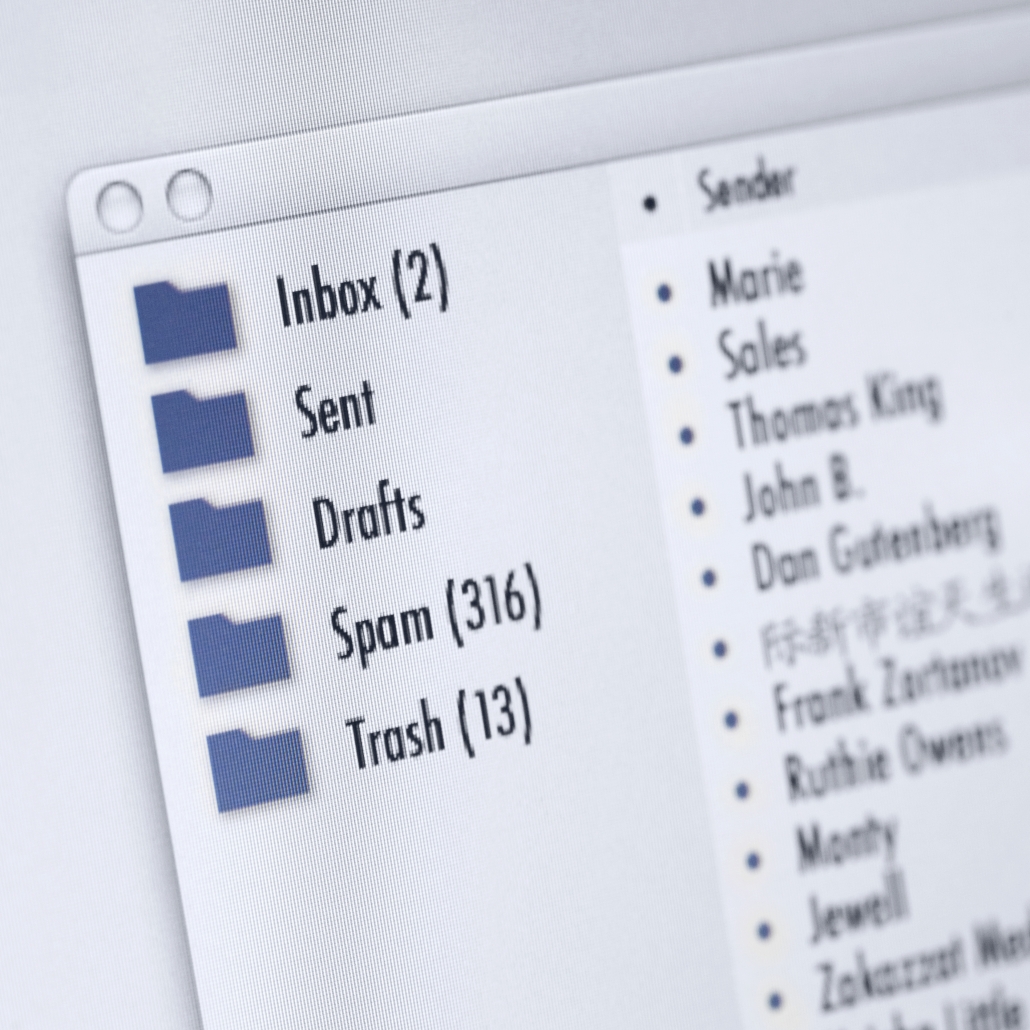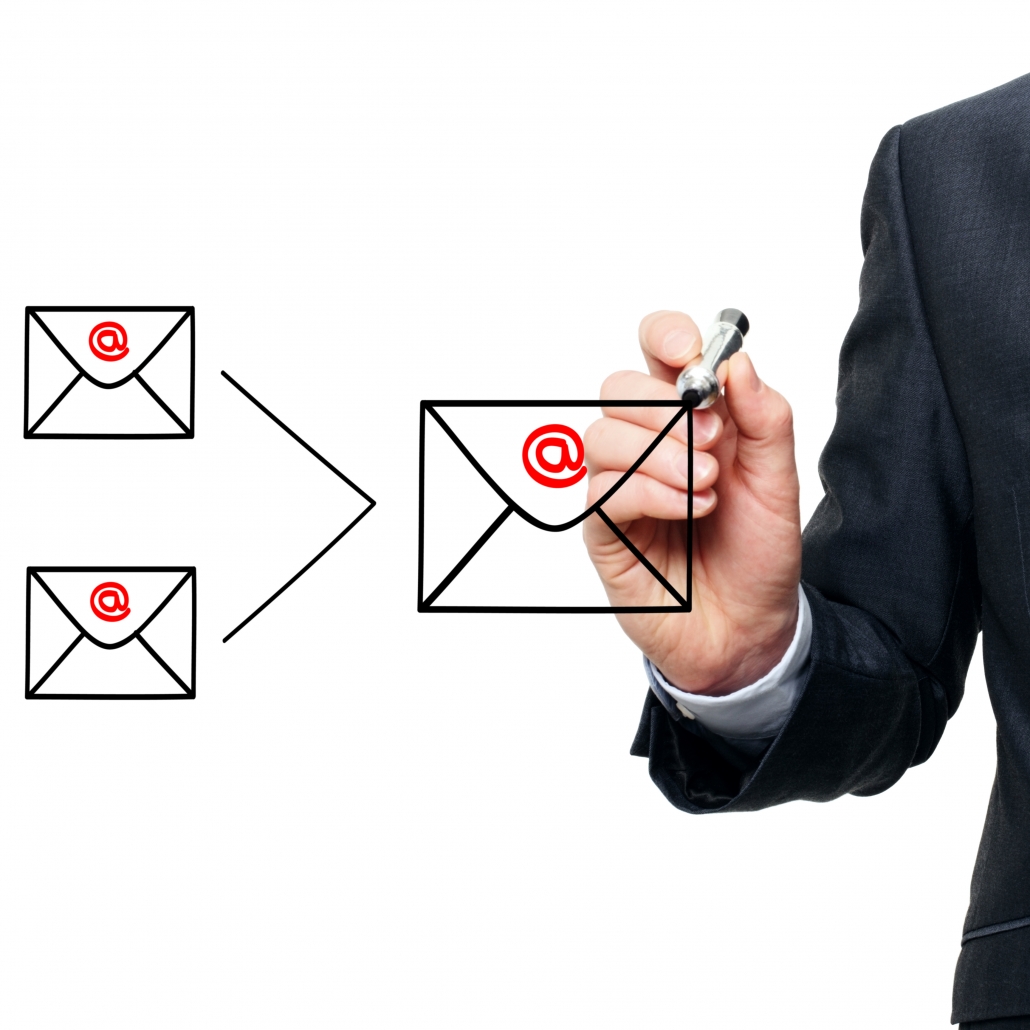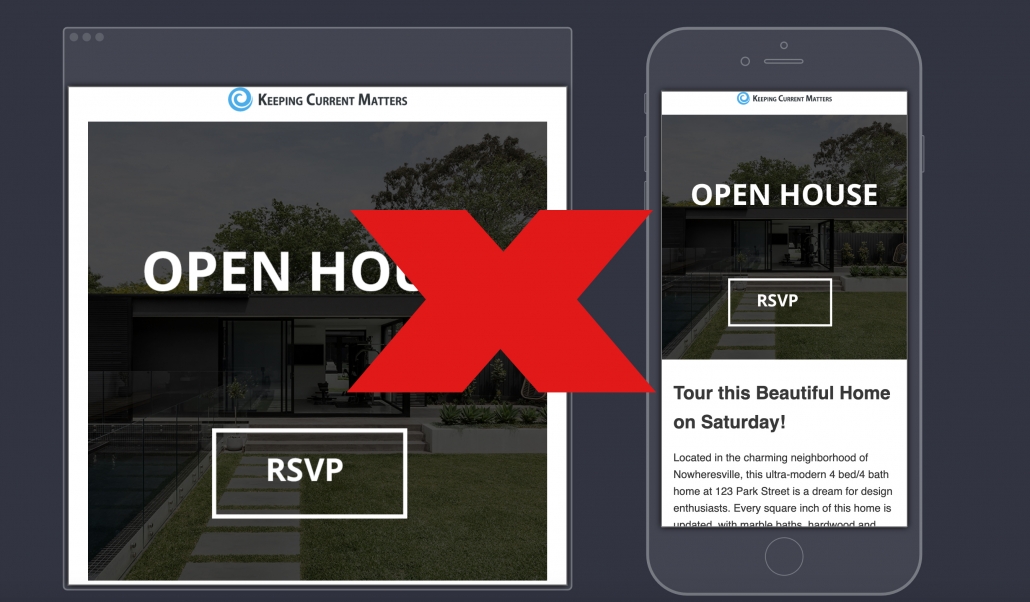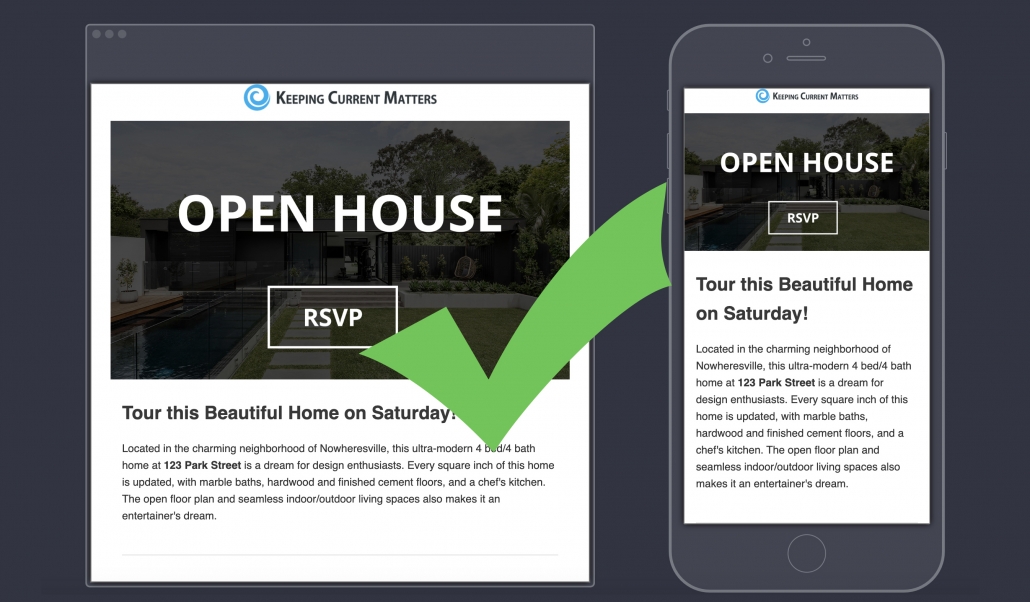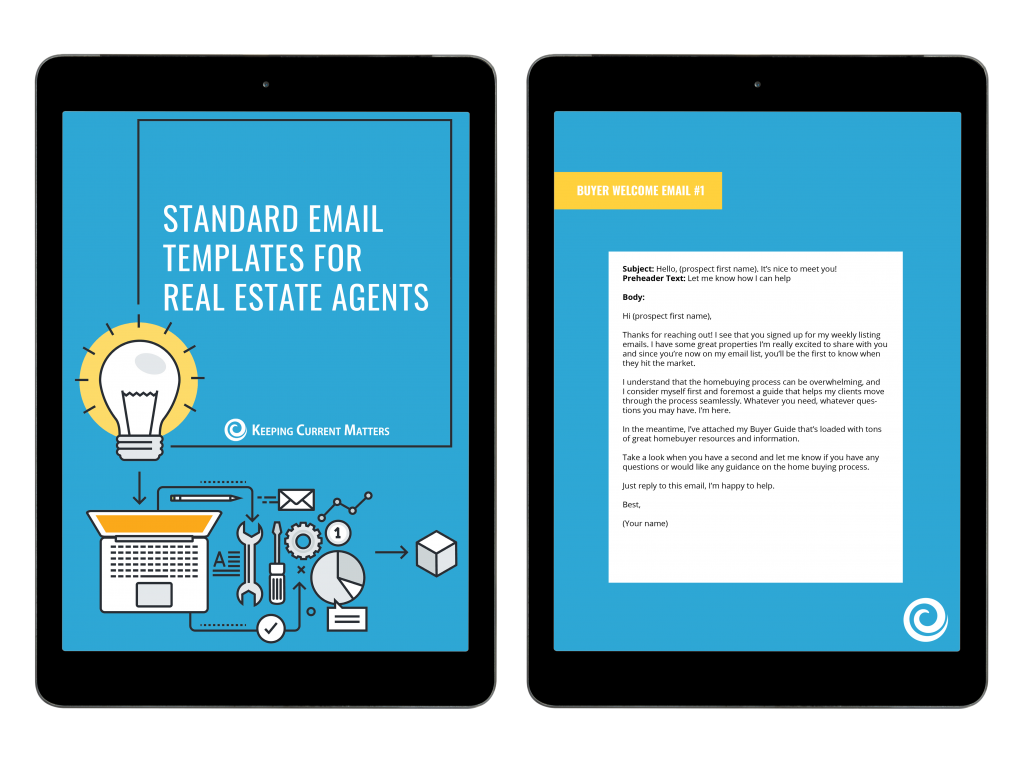These 7 Email Mistakes Could be Costing You Clients
With prospecting, listing appointments and social media taking up all your time – has email become an afterthought?
Other than in-person or by phone, email is the most direct way to communicate with your audience.
It also happens to be one of the cheapest with a $38 ROI for every $1 spent.
But diving into the world of email campaigns can be a little intimidating. Many Customer Relationship Management systems (aka CRMs) aren’t super “user-friendly” and the trial and error can take up precious time.
But email really is simple, and 63% of real estate email marketing campaigns receive positive engagement.
Once you have the big don’ts under your belt, you can start focusing on what really matters-maintaining happy clients and converting leads.
Here are the most common email marketing mistakes you should avoid at all costs.
Not Welcoming New Subscribers
Who doesn’t love a good welcome email?
If created right, it can be the perfect starting point for a very healthy email marketing relationship. If not, you could lose your only chance at a client.
The average open rate for a welcome email is a whopping 50%.
That’s a lot of pressure to make something great!
On top of that, subscribers show a 33% higher engagement rate on a long-term basis when they receive one. Combined with the fact that 50% of brands don’t send a welcome email, this could be a great marketing opportunity for any real estate agent.
Generally, your welcome email should do these things:
• Reassure recipients they’ve made the right choice
• Use friendly, conversational language
• Build trust by delivering on what you promised
• Set expectations about email frequencies (weekly, bi-weekly, monthly)
• Be followed up with a couple more “welcome” emails
• Encourage them to do other things: follow on social media, visit website, etc.
The simple addition of a welcome email to your marketing strategy could make a big difference in the agent-client relationship. And remember, don’t stop at just one. A recent study found that customers spend an average of 58% more when they engage with more than three welcome emails.
Sending Emails Too Often or Not Often Enough
We know. Finding the right balance can be complicated. But there really is a happy medium for sales email volume.
So, how often should you send marketing emails?
Let’s look at some stats.
According to Hubspot, 69% of users unsubscribe from a company because the organization sends too many emails. They also said they wished some companies would send more. Very interesting, indeed.
So what we know is email users don’t like too many emails and most companies don’t send enough. That’s a great place to start.
As a general rule of thumb, it doesn’t hurt to send your recipients 1-2 emails per month. Some great email ideas for real estate agents are monthly listings roundups, newsletters, event invitations or neighborhood news. It’s frequent enough to stay on the mind without being too annoying.
Even more than volume, you want to make sure you’re sending personalized emails to personalized lists. More on that later.
Not Creating Targeted Campaigns
It’s easy to want to simplify your email marketing process as much as possible.
I mean, you actually have an email campaign so you’re doing something right, right? Yes and no.
Remember, not all of your leads or clients are at the same place in the sales process. Some are actively looked while others may be years away from the buying and selling process. Some have young families, others have recently retired.
In order to speak to everyone’s needs, you should have different campaigns built for different lists. Today’s consumers don’t want to be blasted with unnecessary information. That’s an easy recipe for an unsubscribe.
Instead, you should be creating simple campaigns that are sent to targeted lists and deliver value for that specific audience
Here are some great real estate agent email list ideas to consider:
• Former clients (1, 5, 10 years)
• New clients
• Anniversary list
• New leads
• Old leads
If you want to get really creative, you can break them down further. For instance, if you have a couple buyers who are looking at a specific neighborhood, make sure they’re receiving your “Local Guide to Anywheretown, USA” email.
It’s emails like these that not only help set you apart, educate and entertain clients but also help establish you as an expert in your local market.
If you’re still fuzzy on what personalization means, check out our pre-made email template series for some easy ways to incorporate it into your strategy.
Not Reviewing Your Analytics
If you’re sending emails without a shot in the dark about how they’re performing, you’re not alone. Actually, you’re in the majority.
This doesn’t mean you’re doing it right though. The fact is, most people don’t even know they can check their marketing email’s analytics.
But platforms like MailChimp, Active Campaign, Campaign Monitor, Emma, etc. make it super easy (and kinda fun) to understand exactly what is happening behind the scenes.
So why is it important? Because you can see exactly what’s going on with the campaigns. Here are some good statistics to keep an eye on.
- Open rate percentages
- Click rate percentages
- Demographics
- Time opened
Most importantly, reviewing email marketing analytics is an important part of seeing what works, adjusting and re-testing. The world of marketing changes quickly, and email strategy is one of the most important parts of a business.
Staying on top of your analytics is a good way to maintain good results.
Not Mobile Friendly
When Gmail took a recent look at its 1 billion users, it found that 75% check their accounts on mobile devices. Chances are, the vast majority of your subscribers are too.
Not formatting your emails for mobile is an easy oversight, but it could be costing you clients.
Most email marketing platforms allow you to preview your finished product in both desktop and mobile view. You should always do this and look at a couple key features:
Subject Line Length
If viewing on desktop, subject lines allow for about 60 characters before they get cut off. Mobile users get about half that, with most displaying 25-30 characters. This is important because if you’re subject line is too wordy, it’s likely your audience isn’t getting it. Short and simple is the sweet spot.
Preheader Text
Another key part of getting your email opened is the preheader text. If your email marketing builder allows for it, you should always include preheader text. No ifs, ands or buts about it.
Use it as a way to say what your subject line doesn’t.
For example, an email about an upcoming Open House could have:
Subject: Open House This Saturday | 1-4 PM
Preheader: Beautiful Smithtown 4 bed/4 bath
Short Copy
The good news is, you don’t need to spend hours putting together essays worth of copy. Just like subjects, you should keep your email copy short. That way, your email’s recipients can get to the point a lot faster.
Image Size
As a real estate agent, images are one of the more important parts of your email marketing. You should definitely not be shy in showing off a new listing but keep size and shape in mind. A vertical photo, for instance, will overpower when viewing on mobile.
Single Column Formatting
Just like copy, the less complicated the better. There’s no need to get fancy! Sticking with a single column format will help make an email mobile and desktop friendly.
Clear Calls-to-Action
If your email is trying to drive your recipient to take action, don’t bury it below photos and copy. Make sure they don’t have to scroll too far before they get to it.
Take a look at a couple of sample email templates we put together to show you what we mean:
Square Image Overpowers on Desktop
Horizontal Image Fits Well on Both
No Personalization
Speaking of personalization. Did you know that such a small detail could make that big of a difference? It can, and it does.
When marketing experts were recently asked what priority companies should focus on for email, they said one word: personalization.
For real estate agents, the two you should focus on the most are: name personalization and segmentation personalization.
Before we lose you, segmentation personalization just refers to sending emails to specific groups (segments) in your list. You can base it off of: age, location, place in sales cycle, etc.
For instance, a couple who purchased their new home just 6 months ago probably isn’t going to be interested in attending your open house. Move them to the “No Open House” list while making sure your new leads and homeowners of 5-10 years are on the “Yes Open House” list.
If you aren’t convinced you should be personalizing your emails, here are some facts from Mailigen to help sway you:
- They increase open rates by 39%
- They drive 18 times more revenue than general broadcast emails
- They have 28% lower unsubscribe rates
Although it requires more effort upfront, personalization can save you time and money in the long run while maintaining a good rapport with your recipients.
Subject Afterthought
You have about 0-3 seconds for your recipients to decide if your emails are attention-worthy. Case and point, subjects matter.
This is what gets people to open your emails. It’s what helps them decipher whether or not the email is going to be helpful, entertaining, or a waste of time.
So, how exactly do you say everything you need to in 50 characters or less? You follow these tips for writing great subject lines.
Email subjects should be:
- Short
- Put the most important words first
- Clear and specific
- Include dates and deadlines (if there are any)
- Present value
- Personalized (They have up to 40% better open rates)
Finally, many email marketing experts recommend writing the email subject before you do anything else. And if your platform has the option, you should definitely be running A/B tests to see what gets the best response.
Bottom Line
Email is one of the most important parts of your real estate marketing strategy. Time and time again, it converts better than social media, display ads and SEO.
And with email users increasing year over year, it’s only becoming more vital. By avoiding these easy email mistakes, you could increase your client-base and in turn, your revenue.
Once you get the big mistakes out of the way, the next big hurdle can be figuring out what to say. Tone and language play a big part in building digital relationships and appealing to a wide audience.
Never fear. We’ve put together some basic email templates so you can spend more time helping people make powerful and confident home decisions and less on figuring out a good subject. Click the button to download them.



